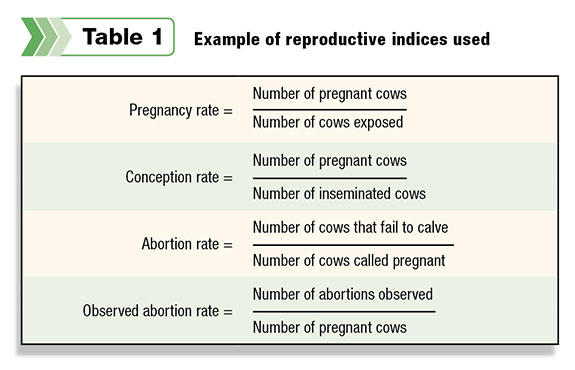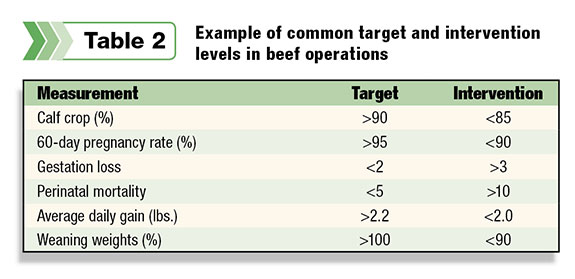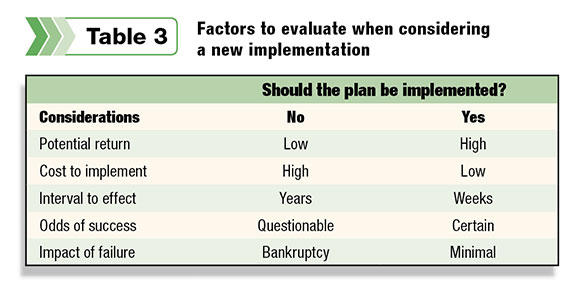As general goals for a cow-calf operation, we expect to have a calf per cow per year, low mortality from calving to weaning and a homogenous crop of weaned calves.
Here is an introduction on how to evaluate the reproductive performance of your herd, how to interpret your findings and a general guide to make any appropriate changes.
1. Maintain herd records
It is difficult to evaluate much without proper records. If, at present, you don’t have appropriate records of your herd and production, this should definitely be on the top of your herd’s New Year’s resolution list.
Knowledge is power, and you won’t be able to manage what you can’t quantify or even identify.
2. Select performance targets
When setting your targets, make sure they are appropriate for your production system, and understand that achieving them may take time and effort.
Targets can be set at the individual and herd level to allow “management by exception” on those individuals that do not perform as expected.
3. Set goals and plans
Optimize reproductive performance:
- Calve heifers by 24 months old: Ensure good nutrition of replacement heifers to promote puberty, cyclicity and appropriate size before breeding season.
- Increase the number of cows giving birth to a live calf: Guarantee appropriate nutrition, length of breeding season, bull-to-cow ratio and herd health.
- Remove open or cull cows: Identify cows that don’t meet your targets, and remove them from the herd.
- Reduce fetal losses: Control for abortion diseases.
Increase the percentage of cows that wean a live calf:
- Reduce calf mortality: Select for easy-calving sires, observe close-up groups and control for neonatal diseases.
Increase calf weaning weight:
- Ensure appropriate nutrition for cows and calves: Supplement animals with additional feed when they need it, target for good-quality pasture and evaluate the mineral levels of your animals for additional supplementation.
4. Measurement of performance
Identify the measures that best reflect your production with precision and accuracy, and have a goal to each one of them (Table 1).
Calving interval: The average time period between calvings, measures past reproductive performance (lag time).
It is influenced by nutrition, cyclicity, fertility of cows and bulls, and the ability to maintain pregnancy.
Pregnancy rate: Total number of cows that become pregnant during a period of time, as compared to the total number of cows eligible to become pregnant during that period.
Conception rate: Number of pregnant cows as compared to the number of inseminated cows. In a timed-A.I. program, conception rate essentially equals pregnancy rate if compliance is good.
5. Compare with your benchmarks
The use of benchmarks is a reference against which your herd may be compared or assessed under current conditions.
It will help you identify if you are doing the right things. State data, national information, breed associations and software companies are examples of where to obtain benchmarks.
6. Use of target guidelines and evaluation of possible causes
For each of the measurements previously mentioned (and any additional that you would be using), it is important to have an intervention level set.
If such level is reached, an evaluation of the possible causes should be made, and a plan should be established to improve this parameter (Table 2).
7. Considerations to appropriate implementations
As previously mentioned, implementations to achieve targets may take time and investments.
Evaluate if such investments are currently necessary or if other alternatives can be applied while working in stages for future changes (Table 3).
8. Monitor and follow up
With implementations set, observing, checking or keeping a continuous record of the process is essential to reaching a goal of improvement.
Once the goal is achieved, monitoring should continue and goals can be reset. ![]()

Catalina Cabrera
Clinician
Livestock Reproduction and Herd Health Service
University of California – Davis










